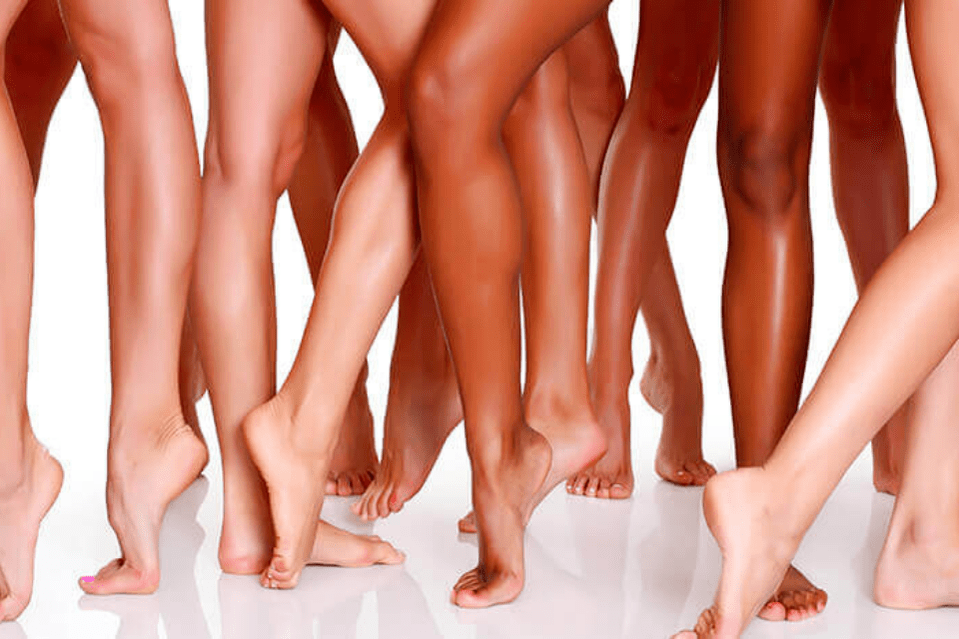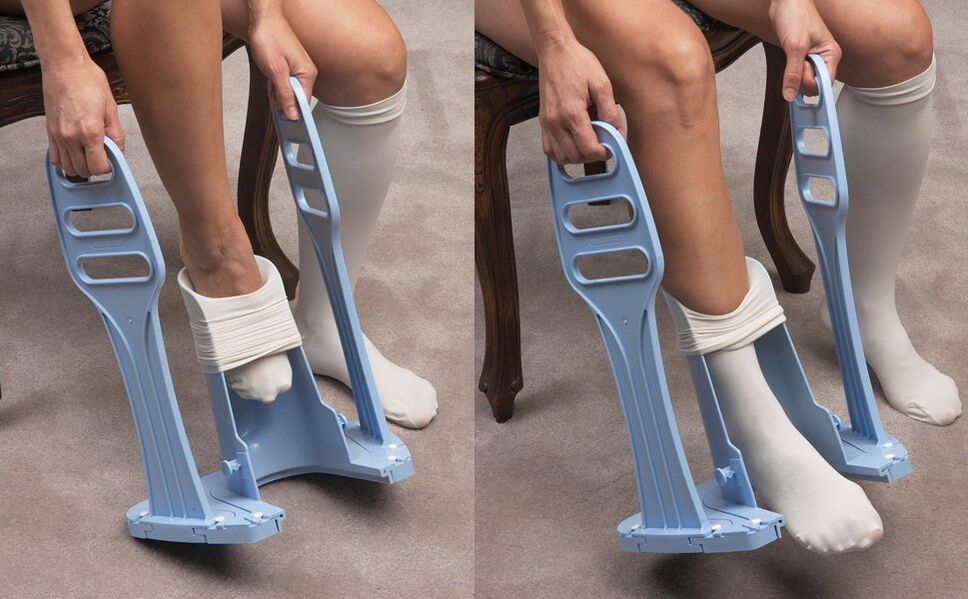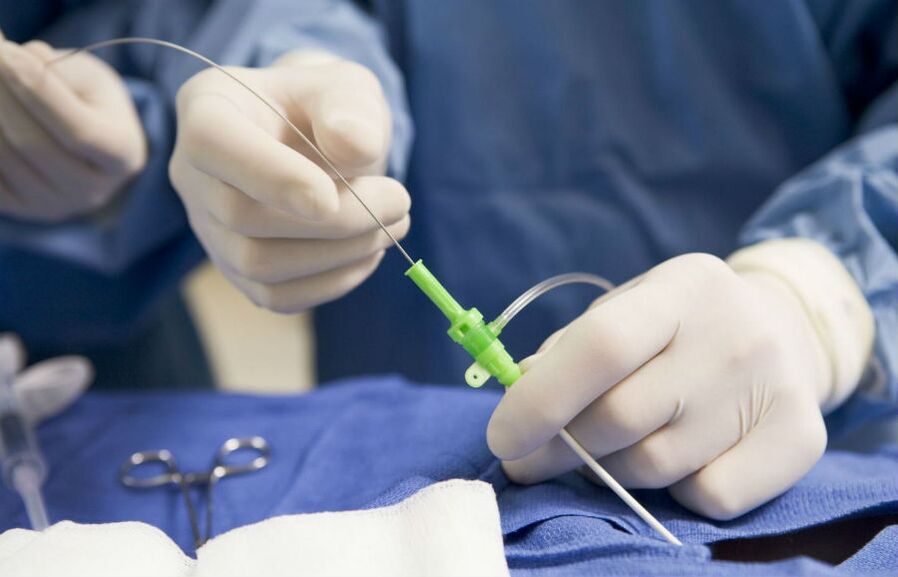
Varicose veins are a common disease that is characterized by an enlargement of the lumen of the blood vessels, malfunction of the valve system, and the occurrence of blood reflux. The pathological process can be localized in different places, therefore there are different types of diseases:
- Dilation of the veins of the esophagus;
- rectal veins (hemorrhoids);
- Veins of the small pelvis;
- Veins of the spermatic cord (varicocele);
- Veins of the lower extremities.
Varicose veins of the legs are considered the most common. It is estimated that more than 30% of the population suffer from it, with the majority being women. Varicose veins on the legs are not only ugly protruding veins, but also a lot of unpleasant sensations and discomfort. The pathological process is accompanied by severity, pain, edema and often leads to dangerous complications: thrombophlebitis, thrombosis, trophic ulcers. Many want to know how to get rid of varicose veins forever, as it significantly reduces the quality of life. But, unfortunately, this phenomenon is irreversible, and the only thing that can be achieved is to stop or slow down the development of the disease.
causes
The causes of varicose veins are not yet clearly understood. It is understood that the disease is accompanied by thinning, weakness and loss of elasticity of the vascular wall, as well as valve insufficiency. As a result, the veins become unevenly expanded, stretched, long, tortuous, nodular. It is assumed that a genetic predisposition plays a decisive role in the onset of the disease, i. e. weak vessels and defective valves from birth.
There are a number of factors that contribute to the development of varicose veins, although they are not their causes:
- Heredity (according to experts, the risk of the disease in people whose parents suffer from it is up to 70%).
- Belonging to the female gender. The reasons for this are hormonal changes during puberty, pregnancy and menopause as well as the use of hormonal contraceptives and the wearing of high-heeled shoes.
- Work activity associated with a long stay on legs or in a sitting position (hairdresser, salesman, surgeon, waiter, driver, accountant, programmer and others).
- Age at which the weakening of the walls of the blood vessels and the deterioration of the valve apparatus are a natural phenomenon.
- Operative interventions.
- Sedentary lifestyle.
- Increased intra-abdominal pressure due to obesity, pregnancy, heavy lifting (loader, weight lifter), frequent exertion with chronic constipation and cough.
Treatment methods
Varicose veins are a chronic process that begins gradually and only progresses over time. To date, it is impossible to completely defeat the disease, but it is possible to slow its development and reduce symptoms if complex treatment is used, which includes:
- Change of lifestyle;
- Diet;
- physiotherapy exercises;
- Compression therapy;
- Medicines (for internal use and local administration);
- surgical intervention;
- thermal processes;
- Folk methods.
You will have to struggle with varicose veins all your life. Self-medication should not be used. It is necessary to be examined by a phlebologist or vascular surgeon who will diagnose, determine the stage of the disease and the severity of the lesion, and prescribe the appropriate treatment. The main task is to eliminate or reduce clinical manifestations, stop the progression, prevent relapses and the development of complications.
The effectiveness of treatment depends on whether the patient follows all the recommendations of the doctor. It is important to seek help at an early stage if there is no pain, but evening swelling, heaviness and tiredness of the legs, small spider veins on the skin have appeared.
Lifestyle correction
Without changing your lifestyle, it is impossible to effectively treat varicose veins. The rules to be followed are completely banal, and failure to follow them is usually associated with a lack of willpower or an irresponsible approach to one's own health.
- Maintaining normal body weight.
- Saying goodbye to bad habits: alcohol and smoking.
- Refusal to sunbathe, visit steam rooms and saunas, hot baths (including foot baths).
- Rejection of high heels (no higher than 4-5 cm).
- Wearing special stretch jersey.
- Provision of physical activity. These can be walking, swimming, physical therapy exercises, some sports. The main thing is to exclude squats, weight lifting, long distance running, jumping and martial arts.
- Right nutrition. The diet should include more fresh vegetables, fruits, herbs, whole grains, and seafood. It is recommended to reduce the amount of meat. It is necessary to abandon smoked, fried, salty, fatty. For beverages, give preference to green tea, clean water, fruit drinks, natural fresh juices, and limited coffee.
- Take every opportunity during the day to raise your legs at an angle of about 20 degrees.
- Buy a special pillow for the legs so that they are above the level of the heart when you sleep.
- Try to rinse your feet with cold water as often as possible.
Compression therapy
Special stretch jersey is now available in a wide range. These are knee socks, stockings, tights of various colors and densities, practically no different from ordinary ones. They have become a good alternative to elastic bandages, are uncomfortable to use and externally unaesthetic.
Special jersey cannot treat varicose veins, but it does improve microcirculation, reduce stress on the veins, prevent blood congestion, reduce the diameter of blood vessels and promote the outflow of venous blood and lymph. A person feels lightness in his legs, in the evening he becomes less tired, there is no swelling.

Without the habit of putting on compression stockings by hand, things get difficult at first. To make it easier for you, you can purchase a special device.
There are four classes of medical knitwear, depending on the pressure applied. You can only wear 1st class compression products, which are considered prophylactic and are more intended for healthy people. The rest should be prescribed by a doctor depending on the diagnosis and severity of the varicose veins. You should be aware that compression products may be contraindicated in certain medical conditions. Tights or stockings are selected by the doctor strictly according to size, otherwise the desired effect will not be achieved.
Medication
For the treatment of varicose veins, tablets and external means in the form of gels, creams and ointments with a different spectrum of activity are used. They increase the vascular tone, improve microcirculation, promote blood flow and prevent skin changes. Medicines are said to relieve tiredness, heaviness, discomfort, swelling, itching, cramps and pain in the legs. They are assigned strictly individually.
The main means of treating varicose veins are venotonics. They are made on the basis of horse chestnut, rutin and vine leaves and are almost always well tolerated by patients. Available in the form of tablets, capsules, gels.

It is necessary to apply a gel or cream to the legs with varicose veins every day and rub with light movements.
Anticoagulants are used to lower blood viscosity and reduce the likelihood of thrombophlebitis. These are ointments based on heparin with cooling additives in the form of menthol, camphor, eucalyptus. Not only do they thin the blood, but they also prevent thrombophlebitis from developing.
Antihistamines may be prescribed for skin changes that cause itching. For inflammation, nonsteroidal anti-inflammatory pills are prescribed.
Surgical intervention
To get rid of varicose veins, surgery is performed to remove the affected part of the vessel to stop the outflow of blood from the superficial vein into the deep. The operation is called a phlebectomy. In its classic form, it is used less and less in connection with the emergence of new, less traumatic ways of dealing with varicose veins. Such treatment is usually indicated for large vein diameters and advanced disease.
A more gentle method is microflebectomy, in which a section of vein is removed in parts and not through an incision, but through a puncture.
Thermal methods
Radiofrequency ablation is considered to be the safest and least traumatic method of treating varicose veins, although it has some contraindications. The method consists in the thermal action of microwaves, which closes the venous lumen. Main advantages:
- outpatient treatment;
- no anesthesia and no incision required;
- Recovery does not take long;
- the procedure is easily tolerated;
- can be done in summer;
- there are no bruises after treatment, swelling and pain are negligible.

Radiofrequency ablation is a painless method of treating varicose veins.
Laser coagulation is another method of treating varicose veins. During the procedure, a laser is applied to the vessel wall. The irradiation leads to the vein walls sticking together and the complete closure of the lumen. It is performed on an outpatient basis under local anesthesia without incisions. A catheter is inserted into the lumen of the vein, through which an LED is inserted and radiation is delivered. The procedure is not very traumatic and complications are very rare.
Sclerotherapy
This non-surgical method is one of the most common. It is used on small veins and as part of complex treatment along with surgery. The bottom line is that a special drug with a sclerosing effect is injected into a vein with a thin needle. This causes the vessel walls to stick together, close and stop the flow of blood. The affected vein turns into a strand of fiber. The main advantages of the method:
- outpatient treatment;
- low invasiveness;
- simple execution;
- the duration of the procedure is about 20 minutes;
- good cosmetic effect.

When the disease starts, a complication such as deep vein thrombosis can develop.
Traditional methods
Walnut tincture
Place chopped unripe walnuts in a glass bowl and pour olive oil over them. Put in the sun for 40 days. Apply if necessary and lubricate the affected area. Continue treatment for about four months.
Cabbage leaf
Chop off a cabbage leaf, apply a layer of olive oil on one side, apply this side to the diseased area, bandage and leave for a day. Continue treatment for a month.
buckeye
This is one of the most effective folk remedies. For the treatment of varicose veins, a tincture is made from the fruits of the plant, which must be crushed, half filled in a glass container (three liters) and filled with vodka. Remove in a dark place for a month, stirring from time to time. When done, rub over sore spots overnight. Alcohol tincture from chestnuts for external and internal use for varicose veins can be bought in the pharmacy.

Physiotherapy is an integral part of complex treatment for varicose veins.
Exercises
If varicose veins appear, the question may arise whether sport and sport are possible and which exercises are useful. Most doctors agree that physical activity is very important in such a disease, because dynamics are good for the veins, and static electricity is harmful. But it is just as important to consult with your doctor about which sports you can practice and which loads are optimal. In addition, the patient can be shown special therapeutic exercises that are performed directly in a medical facility. You can also do simple but effective exercises at home that, with regular exercise, will help relieve symptoms of varicose veins.
- Lie on your back with pillows under your feet so they rise at a 20 degree angle. Close your eyes, relax completely, take a deep breath.
- In the supine position, lift your legs vertically and rotate your feet alternately in and out.
- Lie on your back and move your legs like you would when riding a bike.
- Lying on your back, lift your legs and cross them (scissors).
- Stand straight, lower your arms, legs together. Slowly step up on your tiptoe and then step back down just as slowly.
- Walk on the spot, don't tear your socks off the floor.
- Sit in a chair, bend your ankle bones toward and away from you, then bend your toes in the same way.
- Pour an elastic jet of water (alternately cool and warm) over the legs.
diploma
Varicose veins are an irreversible process, but it is imperative to treat, especially since there are some modern methods that need to be combined. Without treatment, there is a high risk of developing complications such as chronic venous insufficiency, phlebitis, thrombophlebitis, thrombosis, trophic ulcers, and even a disease as dangerous as can be fatal as pulmonary embolism.

























